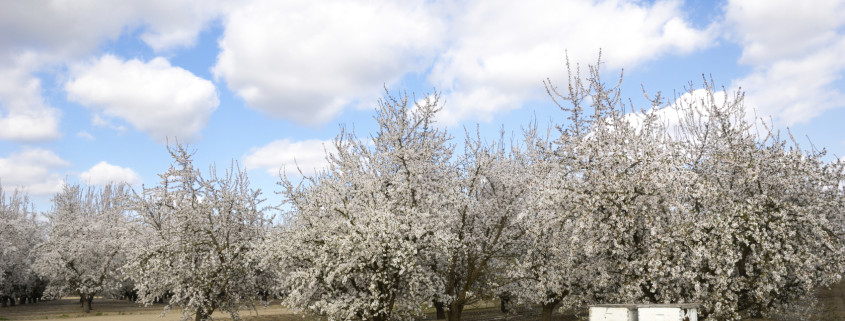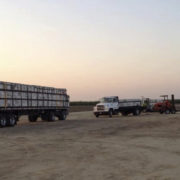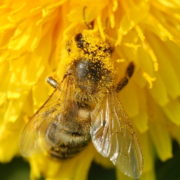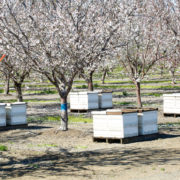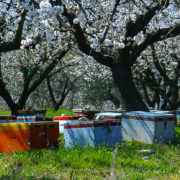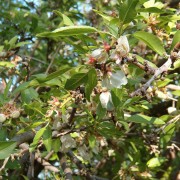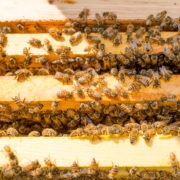Which Direction Should Beehives Face For Best Pollination?
Many experienced beekeepers suggest that the entrance of a beehive ideally should face towards the south or to the east. The southern exposure makes sense. During the winter months – at least in the northern hemisphere – the sun sits low on the southern horizon. The direct rays of sunshine on the entrance during the late fall and early spring enable a beehive to potentially gain some sunlight and extra flying hours. An eastern exposure is also valuable because when facing east, the bees tend to get an earlier start on foraging throughout the season regardless of the angle of the sun.
Most of the time, however, it doesn’t matter all that much. Many backyard and urban beekeepers are limited in their options on how and where to place their bees. The truth is, bees are flexible, and most of the time they adjust well to the environment they are in. When it comes to almond pollination – which is about to take place this month – almond orchard owners take no chances on the placement of the beehives that pollinate their groves. Each year, a staggering 1.6 million colonies are rented for almond pollination. Almond growers pay a small fortune to rent these bees, and they usually have specific requests on how they would like them placed.
One of the issues affecting bee pollination of almonds is weather. Almonds are pollinated in February, a typical month of adverse weather not only in California, but most everywhere in the United States. Honeybees do not fly until daytime temperatures exceeds 55º F. Obviously, a grower cannot control the weather, but he or she can control the way that the rented colonies are placed in the grove so that the bees obtain as much sunshine as possible. Growers typically request that beehives should face the sun, and the boxes should not be shaded by the trees or by other beehives.
To give an almond grower good value, the beekeeper should strive to place most beehive entrances facing due east or southeast, so that the bees catch the early morning sun and get off to an early start. Also, a certain percentage of the colonies should face west. The west-facing colonies will often fly right up to the evening hours, usually after the east-facing colonies have shut down. Plus, on a day where rainy weather clears up later in the afternoon, the west-facing bees might still have time to venture out, while the east-facing colonies remain shut down.

